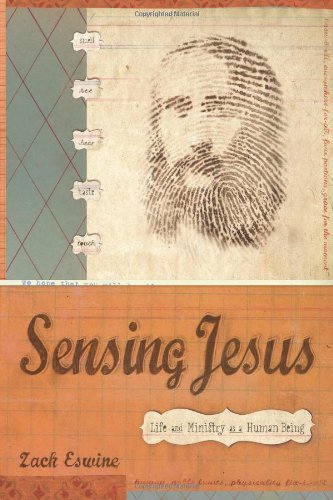
Sensing Jesus: Life and Ministry of a Human Being (2013)
Zack Eswine
Eswine offers an uncompromisingly honest reflection on pastoral life and ministry as a follower of Christ. In a sea of ministry books that are triumphalistic and utopian Eswine unflinchingly exposes his own ministry failures and the sweetness of the Gospel in the messiness of his own life and ministry. His book is, at the same time, disturbing, joy-inducing, and full of Christ-centered gospel hope and real-world practical counsel for all attempting to honor Jesus in the trenches of real-world ministry. I consider Sensing Jesus must reading for pastors, but any follower of Christ would benefit from reading and meditating on this liberating book.
Reading for Preaching: The Preacher in Conversation with Storytellers, Biographers, Poets, and Journalists (2013)
Cornelius Plantinga Jr.
Vast and varied reading with a gospel-centered lens about a wide range of perspectives and from diverse literature is an absolute necessity for preachers. Deeply human sermons that skillfully apply the gospel to every aspect of life do not come easily. Plantinga does not simply call the preacher to read a lot but provides a helpful map for smart reading. He also helpfully explains the indirect benefits of a program of general and disciplined reading by asserting that reading expressly for finding illustrations is not a good idea. Exactly! A robotic searching for illustrations produces robotic sermons. Expansive, disciplined, and attentive reading, exercises the mind and fills it with a wealth of potential illustrative material. This practice makes choosing illustrations a matter of excluding from an array of possibilities rather than the malnourished quest for one illustrative morsel. Plantinga’s concrete guidance will help the preacher to stoke his imagination, exercise his critical thinking, and gain wisdom in the applying the gospel to every facet of thought and life.
Augustine’s Theology of Preaching (2014)
Peter T. Sanlon
Sanlon writes with the conviction that Augustine has been analyzed as a theologian, philosopher, bishop, monk, and apologist, but inquiry into Augustine as a preacher has been tragically neglected. Further, Sanlon convincingly argues that when Augustine the preacher is neglected then he is not rightly understood. He contends, “Augustine was frenetically active, but he was never too busy to preach” (13). The book provides a real life portrait of Augustine that seeks to understand him as a pastor and preacher in his historical and oratorical context. He contends that a careful reading of Sermones ad Populum reveals the concepts of interiority and temporality as Augustine’s hermeneutical key. He explains, “
The King in His Beauty: A Biblical Theology of the Old and New Testaments (2013)
Thomas R. Schreiner
My Southern Seminary colleague, Thomas R. Schreiner’s book, The King in His Beauty, is a resource that I consult on a weekly basis as I prepare to preach. I do not know of any higher praise I could personally give the book. It is written in an accessible style but is theologically rich. One thing that makes it so useful to preachers and biblical teachers is its book-by-book canonical arrangement and the fact it is a whole-Bible biblical theology with a coherent biblical-theological vision. Schreiner writes, “I intend to argue in this book that the ‘kingdom of God,” if the term is defined with sufficient flexibility, fits well as a central theme of the entire Bible” (xii). He understands the kingdom of God to designate: (1) the rule of God as King (2) human beings who are created in God’s image as his subjects, and (3) the universe as the place where his kingship is worked out. Schreiner’s attentiveness to the storyline of Scripture in light of a biblical book’s historical and canonical setting in redemptive history yields rich and lucid insights.
Justification Reconsidered: Rethinking a Pauline Theme (2013)
Stephen Westerholm
If you are looking for one relatively short but solid book to help understand the ocean of literature on justification and “the New Perspective on Paul,” Justification Reconsidered is an excellent choice. He provides a critique of the New Perspective views as articulated by Krister Stendahl, E.P. Sanders, J.D.G. Dunn, N.T. Wright, Douglas Campbell and others, but Westerholm also provides a constructive argument for understanding Paul’s doctrine of justification. He argues that Paul’s view of justification was not only an apologetic against Jewish legalism but was an argument against any view of human works as being a ground of our being declared righteous in the sight of God. While noting that the New Perspective scholars have rightly emphasized some neglected implications of Paul’s doctrine of justification, Westerholm concludes, “The doctrine of justification means that God declares sinners righteous, apart from righteous deeds, when they believe in Jesus Christ” (99).



